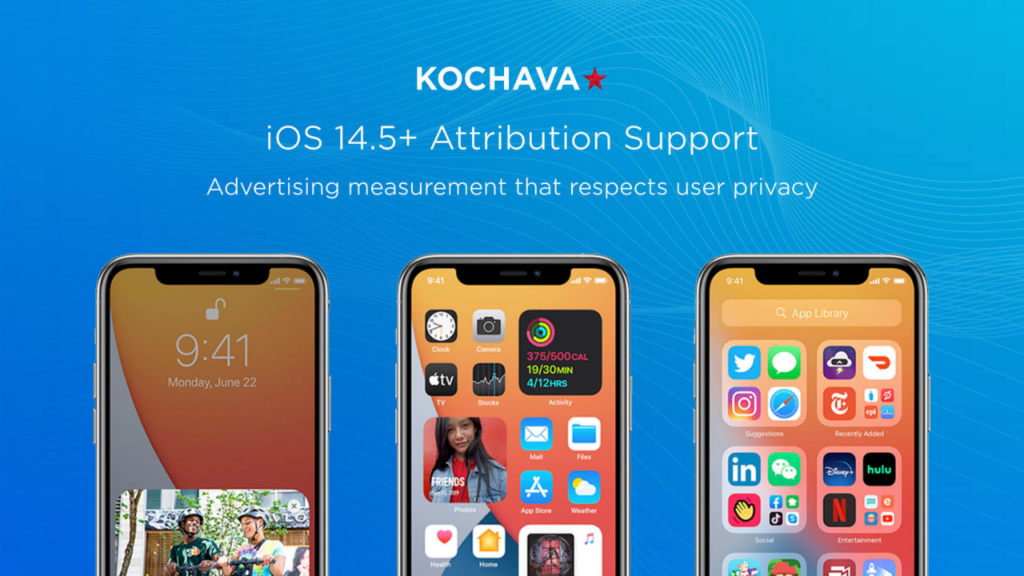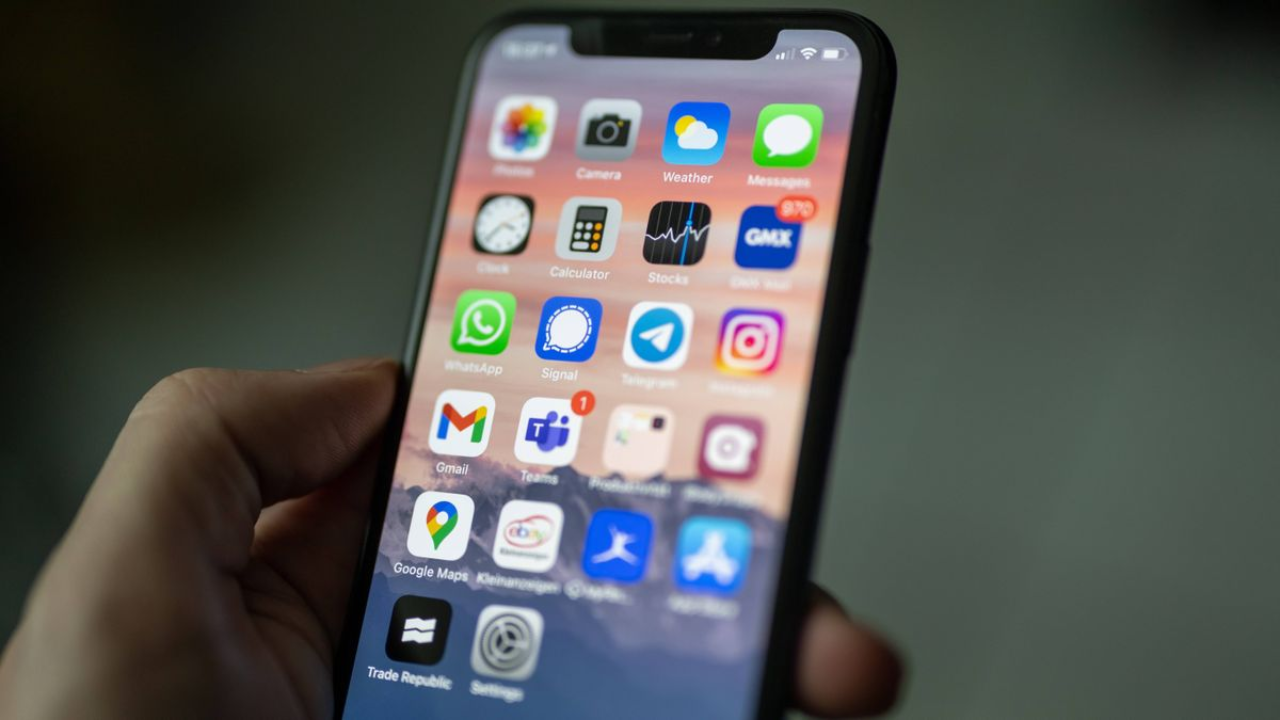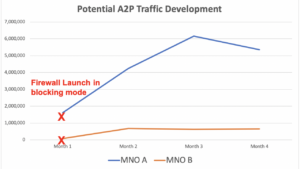Apple recently announced iOS 14 and with it effectively killed off its IDFA – the random device identifier assigned to a user’s device which advertisers use to track data so they can deliver customized advertising. So how can advertisers now tackle attribution?
Here, Ethan Lewis, VP of Engineering at Kochava takes a deep dive into the company’s attribution platform – a configurable attribution waterfall as well as Contextual Attribution, SKAdNetwork, and App Clips. Apple’s new AppTrackingTransparency (ATT) framework, introduced at their Worldwide Developers Conference (WWDC) 2020, promises to make IDFA availability much more scarce.
While certain publishers may find success incentivizing users to accept tracking through ATT and, thereby, leverage the use of the IDFA, there’s no doubt the future of attribution on iOS needs to be viewed through a lens that assumes the IDFA is not present.
As the leading omnichannel attribution platform, Kochava has long served customers who seek to understand both device-centric attribution (where deterministic feedback loops are present) as well as variable levels of incremental (cohort-based) measurement of advertising campaigns through a single toolset.
Our industry-leading configurable attribution capabilities are a testament to our dedication to customer-driven innovation that has resulted in unmatched flexibility, customization, and control in how marketers tailor their attribution. To name a few examples, we are the only platform that enables the marketer to:
- Decide the attribution waterfall for media sources
- Set tracker-level configuration settings that override global settings per media source
- Scale lookback windows down to the minute
- Apply fractional attribution logic (to allocate fractional credit for touchpoints with users across the user journey)
Unlike other mobile-specific attribution companies (mobile measurement providers or MMPs), Kochava has given its customers the ability to model and control how attribution is performed—based on their rules—not as a closed-box solution.
This history places us in a prime position heading into iOS 14, and we’re excited to highlight both capabilities that already exist today, as well as articulate how a new layer of contextual attribution will inform our industry-leading configurable attribution waterfall.

We’ll also touch briefly on our plans for supporting the SKAdNetwork and App Clips; both are important for marketers as they think about shifting changes in the iOS ecosystem.
The Attribution Waterfall in Kochava
Layer 1: Deterministic (with Consent)
Only time will tell what percentage of iOS traffic will still contain the IDFA. In instances where the source app (in which the ad is served) and the advertised app both get a user to consent to tracking through the ATT Framework, will deterministic attribution continue.
While attribution might be impacted by the absence of the IDFA, it’s important to note that all of the industry-leading measurements (analytics, engagement, post-install activity) provided by Kochava will not be impacted as our data model representing our customers’ users are uniquely keyed by the IDFV on iOS. By separating this in our data model, the absence of the IDFA does not negatively impact the operational tools provided to Kochava customers.
Layer 2: Probabilistic
In the absence of an IDFA for deterministic attribution, the signal from impressions and clicks (which Kochava receives on behalf of our advertising clients) includes various attributes gathered server-side which can be used for probabilistic attribution. Kochava gives advertisers control over how they want to use these attributes in the attribution waterfall. It’s important to note that no ‘fingerprint’ identifier is generated client-side nor is any fingerprint ID used for attribution.
The primary server-side attributes include the IP address and user agent for the device interacting with the impression or the click. These attributes help narrow the field of eligible devices for attribution matching to only those instances where the IP and user agent of the device that clicked the advertisement matches those that converted.
The universe of cataloged devices is far smaller on iOS than it is on Android where there are many different phone manufacturers and thereby exponentially more user agents. This means that user agents are far less unique in the iOS universe. As such, the confidence in a probabilistic attribution match on iOS becomes dependent on another factor: time, which we’ll address in layer 4.
Layer 3: Contextual (Device Context Beyond the User Agent) – New for iOS 14
A device carries with it far more context than just a user agent. For purposes of fraudulent bot detection, Kochava currently captures other contexts about mobile devices in the form of attributes like screen brightness, audio volume, locale, language, and timezone, among others.
In keeping with Apple’s spirit of user privacy, none of these data points are deterministic identifiers; they’re simply characteristics that describe additional status indicators of the device. They cannot be used to pinpoint a user identity or precise device and certainly can’t be used for targeting without the consent of ATT.
Across our 4,500+ integrations, we’re in talks with leading DSPs, ad networks, and publishers on how they can begin capturing these same characteristics and pass the context on impressions and clicks. In addition to the user agent of the device, any combination of multiple contextual device attributes could be compared between the ad interaction and conversion to exponentially increase the accuracy of probabilistic attribution.
Kochava offers 60X the lookback window granularity of the next closest MMP.
Layer 4: Time – Managing Probabilistic Confidence Intervals with Lookback Windows
There’s a reason that Kochava offers 60X the lookback window granularity of the next closest MMP. The ability to go from 60-minute down to as little as 1-minute lookback windows can have profound implications on match accuracy—giving greater confidence in attribution outcomes while remaining compliant with Apple’s policies around deterministic identifiers.

Lookback windows dictate the maximum time lapse between an impression or click and the conversion that can be matched to it. While in deterministic matching, the lookback window is more a measure of causality, since the attribution match is made on a one-to-one identifier. The lookback window in probabilistic attribution plays a greater role in attribution match accuracy.
Probabilistic lookback windows typically start at 7 days—albeit to the detriment of accuracy in favor of performance. In probabilistic attribution tests, with a controlled sample of deterministic device IDs available, we have found the following:
- 98% accuracy was achieved when the lookback window was set between 10 and 15 minutes.
- 88% accuracy was observed between 15 minutes and 3 hours.
- Beyond 3 hours, accuracy dropped exponentially—as did the percentage of total attributed conversion volume.
These tests were based on the availability of both IP and user agent but not with the added benefit of a contextual attribution layer. Future analysis will follow as media partner adoption of contextual attribution grows.
Marketers working with Kochava can customize their probabilistic attribution to fall in line with their desired confidence level to a degree not possible with other MMPs.
Marketers working with Kochava can customize their probabilistic attribution to fall in line with their desired confidence level to a degree not possible with other MMPs. Kochava is the only platform where tightening to under an hour is possible with options for 15-, 10- or even 1- 1-minute intervals.
Layer 5: Factoring for the SKAdNetwork – New for iOS 14
Kochava is working with partners across the ecosystem to establish a standard reporting framework that can be used by any MMP and produced by any ad network using SKAdNetwork for deterministic, cohort-based attribution reporting.
Because of the limitations in functionality in the SKAdNetwork and the related delays in postbacks from Apple to the SKAdNetwork partners, Kochava believes there is value in having a standard reporting structure as it facilitates ad networks to report on SKAdNetwork cohort outcomes and enables MMPs to consume the cohort reporting to augment the probabilistic picture.
By standardizing around reporting between vendors, Kochava intends to consume the cohort-based measurement signal produced via SKAdNetwork participants and box-balance the cohorts against the resulting attributed conversions from probabilistic measures.
This will enable marketers to validate probabilistic efforts with the signal from SKAdNetwork despite being cohort-based vs device-based. Kochava has experience providing incrementality reports that deliver aggregated cohort insights and quantify relative lift-over-base performance on a per-channel or campaign basis.

Our unique experience in this area over the past few years will serve our customers well as we deliver a differentiated value proposition to marketers who scale omnichannel media efforts. Further, the ability to link exposure against control and cross-reference with cohort-based attribution via SKAdNetwork enables marketers to remain just as informed in their media efforts.
Deterministic Attribution on Click ID with App Clips – New for iOS 14
For marketers planning to leverage App Clips, Kochava is building in full support for this feature in our upcoming SDK release for iOS 14. Specifically related to attribution, App Clips are launched through a Universal Link (deep link). This is significant because, for the first time in Apple’s ecosystem, query parameters (eg, a click ID) can be passed into the first launch—allowing installations to be attributed to a precise click via the deep link passed into the App Clip.
Passing query parameters into a Universal Link was not previously possible before App Clips. This means deterministic attribution is possible with or without the IDFA because the SDK will always have direct access to the original click.





![[DigitalBridge Research] Augmented Reality Is Changing the Face of Retail!](https://mobileindustryeye.com/wp-content/uploads/2024/03/Cheapnail-Salons-Nearme-2024-03-29T101212.711-300x169.png)

+ There are no comments
Add yours